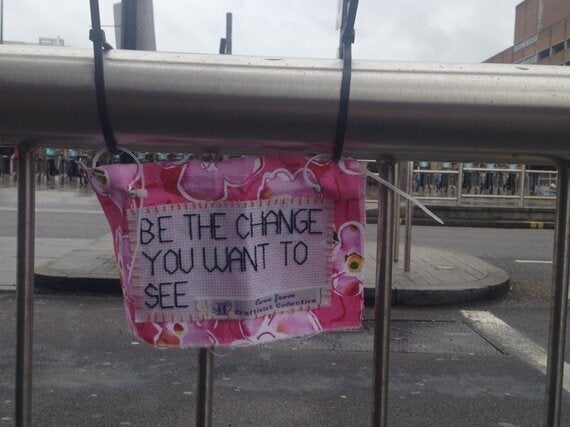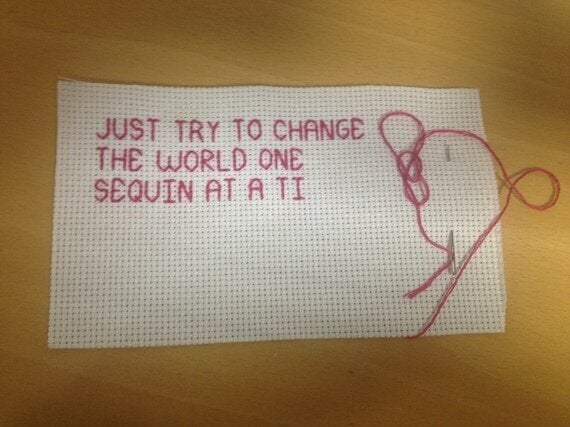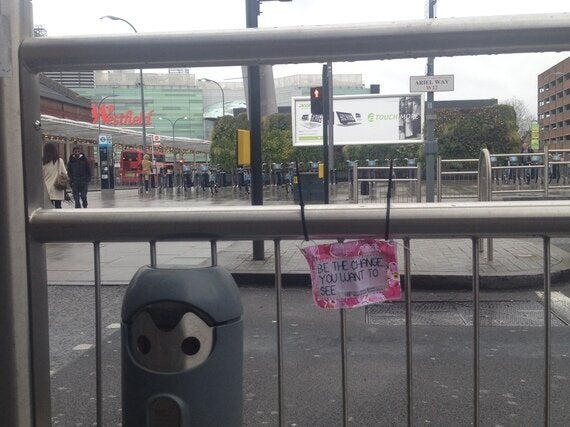Last year I became addicted to online petitions. The quick rush of taking a stand with just a few clicks gave me the feeling of making a difference. But every click just leads to the request of another, and my inbox was full of emails from well meaning websites suggesting another atrocity that I should put my name in opposition to. By the end of the year I had a serious case of petition fatigue.
Prior to that I had clutched to placards as weapons of change but after the exhilaration of every protest, I was left with splinters on my hands and twice as much anger as before. The more I engaged, the more I knew and the more there was to be angry about. Every article I read (and promptly retweeted) about some abuse of power or infringement of human rights chipped away at my faith in people. So I stood on streets shouting at the world, but all I got in return was a sore throat and the guilt that my throat syrup might use palm oil.
I grew tired of always being against everything, traditional activism is a culture that exists in opposition to the world's wrongs. While positive thinking is constantly hailed as the optimum state of mind, here the aim was to draw attention to the negative. It was Twitter, normally happy to provide reasons to be disillusioned, that introduced me to an alternative - craftivism. It's activism through craft, a form of 'slow activism' that produces non-obstructive craft projects that provoke observers to think about things differently, or just to think about things at all.
In the UK, the Craftivist Collective is led by Sarah Corbett, whose blog documenting her own projects attracted the attention of hundreds of 'burnt out activists'. In her book 'A Little Book of Craftivism' Sarah explains how the activity is not just more effective for the activist, but also the recipient: "I felt that many traditional forms of activism actually annoyed the very people they were trying to influence. I wasn't convinced that shouting, preaching and demanding someone to do a particular action would change their mind and result in any long-lasting change."
Having read Sarah's book, I chose a cross-stitched banner with an encouraging message as my first project, but picking a phrase which didn't sound clichéd or preachy was a challenge. In the end I settled for a simplification of the Dalai Lama's words to "be the change you want to see". No longer sure what positive action people should do, I wanted something universal which might just jolt people to do something. While protests are a flurry of activity with little time for thought, the stillness of stitching allowed me to reflect on what I was sewing and to process the information we're all constantly bombarded with.

But soon I missed the camaraderie inherent in activism, so widened my craftivism circle. A Sunday afternoon spent stitching with friends provoked some of the most honest discussions I'd had in months, with everyone aware that they didn't have the answers but sure they didn't want to stop talking about things. Time spent flicking through a book of quotes and skimming Tumblr revealed our range of viewpoints - quotes that some of us found inspiring, brought on waves on nausea for others. While one friend chose a quote from metaphysical poet George Herbert, I scrolled through the #ElleInspire Twitter feed and chose a Lady Gaga quote - "I'm just trying to change the world one sequin at a time". It struck me as exactly what we were trying to do - making small nice changes that might, hopefully, add up to something. Not everyone agreed and this diversity is what I most enjoy about craftivism - so many cause groups see the world in black and white and can be intimating places, but here the emphasis is on making a positive change.

I carried these two banners around for weeks before I was ready to expose them to the cynical eyes of public life. Reminiscent of my parents dropping hints about the merits of the university down the road, I hung my banner a few minutes from my office, so I could check on it regularly. I chose the pedestrian crossing near Westfield Shopping Centre because traffic lights are one of the few moments of enforced still in the daily rush and I hoped my banner might hijack that moment and encourage people to see beyond the task in front of them.

Shifting to the mentality of slow activism is a tricky adjustment, and sometimes it feels like a cop out. There's a homeless man who sleeps not too far from my banner and I know its pretty fabrics do little to help him but I do believe in the long term potential of the accumulation of small positive actions. There's definitely space in the activism world for a spectrum of engagement. Of course protest is important, so if you've still got it in you, then please go out and shout, the world needs you to but I am tired of being angry. After a long period of disillusionment, I feel confident in the power of the individual to shape their world, so why not take a Sunday to create your own craftivism project? And if you think you're too busy, then you need this even more than I did.